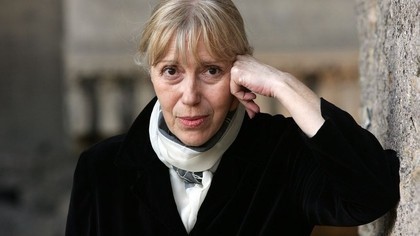“Toad” is
a curious specimen: a novel written in the 1970s that remained dormant until
this year not because it was lost or unfinished or dreadful but because it was
spurned. In 1989 Katherine Dunn published “Geek Love,” a tender and
hallucinatory yarn about a family of circus freaks. It landed with a cannonball
splash where her two earlier novels, “Attic” and “Truck,” had produced ripples.
Between Dunn’s early fiction and her runaway hit, she wrote “
Toad” and
submitted it to her publisher. The book was rejected.
اضافة اعلان
For nearly half a
century the manuscript sat in an archive at Lewis & Clark College among
Dunn’s papers — part of a bequest arranged by the author before her death in
2016. You would think that some canny publisher would have pounced on “Toad”
following the smash success of “Geek Love,” which was a National Book Award
finalist, if only as a money grab. But it was not until 2019 that an editor
named Naomi Huffman, having been granted access to Dunn’s archive, read “Toad”
and finally shepherded it to the finish line. In an editor’s note Huffman
admits to a sense of “frustrated incredulity” that nobody beat her to the task.

If “Geek Love” was
a misfit anthem, “Toad” is a misfit ballad — a quieter and more modest
offering. It concerns the consciousness of a single marginal eccentric rather
than the maelstrom of an entire family. Sally Gunnar is a reformed “bohemian
slob” who lives on disability checks in self-imposed exile. She keeps a tidy
house, hangs out with her goldfish, and passes the days in a depressive haze,
self-medicating with ice cream and murder mysteries. In flashbacks, we learn of
the events that led to Sally’s retreat from the world.
In this second
timeline, she is 20 years old, waiting tables in Portland and surviving on soda
and cigarettes. A chance encounter brings her into contact with Sam, a college
student who embodies all that Sally would like for herself: effortless style, a
life of the mind, sexual charisma, sophisticated origins. He’s also
unbelievably annoying. In a foreword to the novel, Molly Crabapple calls him a
“manic pixie dream boy,” which is exactly right.
Sally grows
infatuated with Sam and his hippie friends, who sit around dirty houses and talk
loftily of Zen and Wittgenstein. Although apparently as cash-strapped as Sally,
the students wear their poverty with a certain panache, as though it were
elective. (Which it might be. The presence of stable middle-class parents
lingers just offstage.)
It is a tale as old
as time: Sally loves Sam, and Sam loves a swimwear model from California with a
big smile and long hair. The enigmatic Carlotta wears rawhide tunics and
submits obediently to Sam’s whims, which include renaming himself constantly
and speaking in non sequiturs. Sam and Carlotta conceive a child and move to
the country, where they aim to be self-sufficient. Sally hangs around in the
role of third wheel as Sam and Carlotta make disastrously naive choices.
When Older Sally
looks back at herself, it is with torrential self-loathing. She castigates
Young Sally for her lack of dignity, grace, and self-reliance. Younger Sally’s
personality, however, is not the problem. The problem is that her friends, if
that is the right word, do not care about or even notice it. Sam and Carlotta
mostly appreciate Sally’s willingness to run errands and help them move, as if
she were a servant or a U-Haul. She handles their negligence by absorbing and
distilling it into a corrosive self-poisoning concentrate.

In both timelines,
past and present, Sally spends a lot of time hating her appetite, which she
considers a source of intolerable degradation. Her yearnings for food and sex
mortify her; she is endlessly pained by what she perceives as a monstrous
inability to restrain herself from indulging in both. Periods of gorging and
restricting are cataloged in detail. Sally dwells viciously upon her body,
describing the “thick lumpiness” of her wrists, “the mammoth, suffocating
gawkiness” of her thighs. “I always felt like a dirty toilet,” she tells a
friend. If anyone else were so cruel to Sally, it would be considered abuse.
One of Dunn’s
running themes is the nature of disgust. As with her other novels, “Toad” brims
with grime. Characters scratch their armpits and sweat and wear stained
clothes. There is belly button lint and vomit and morning breath and flatulence
and snot. Unwashed dishes. Sally is able to forgive ickiness when manifested in
others — she barely blinks when Sam fries up a pan of moldy horse meat for his
dinner — but cannot overlook her own infractions. She is equally the villain
and victim of her story.
Reading “Toad” is like rummaging through the junk drawer of
a fascinating person. It is chaotic, intimate, and unruly. There is not much of
a structure or a plot. Still, it is impossible not to share Naomi Huffman’s
bewilderment at the book’s burial. Dunn’s style is unlike that of anyone living
or dead: simultaneously practical and bonkers; lovely and nasty. If the story
of Sam and Carlotta is slightly dated — a tragedy of misdirected ’60s
radicalism — it comes to us by way of a narrator whose psychological pain is
horrifyingly timeless.
Read more Books
Jordan News




